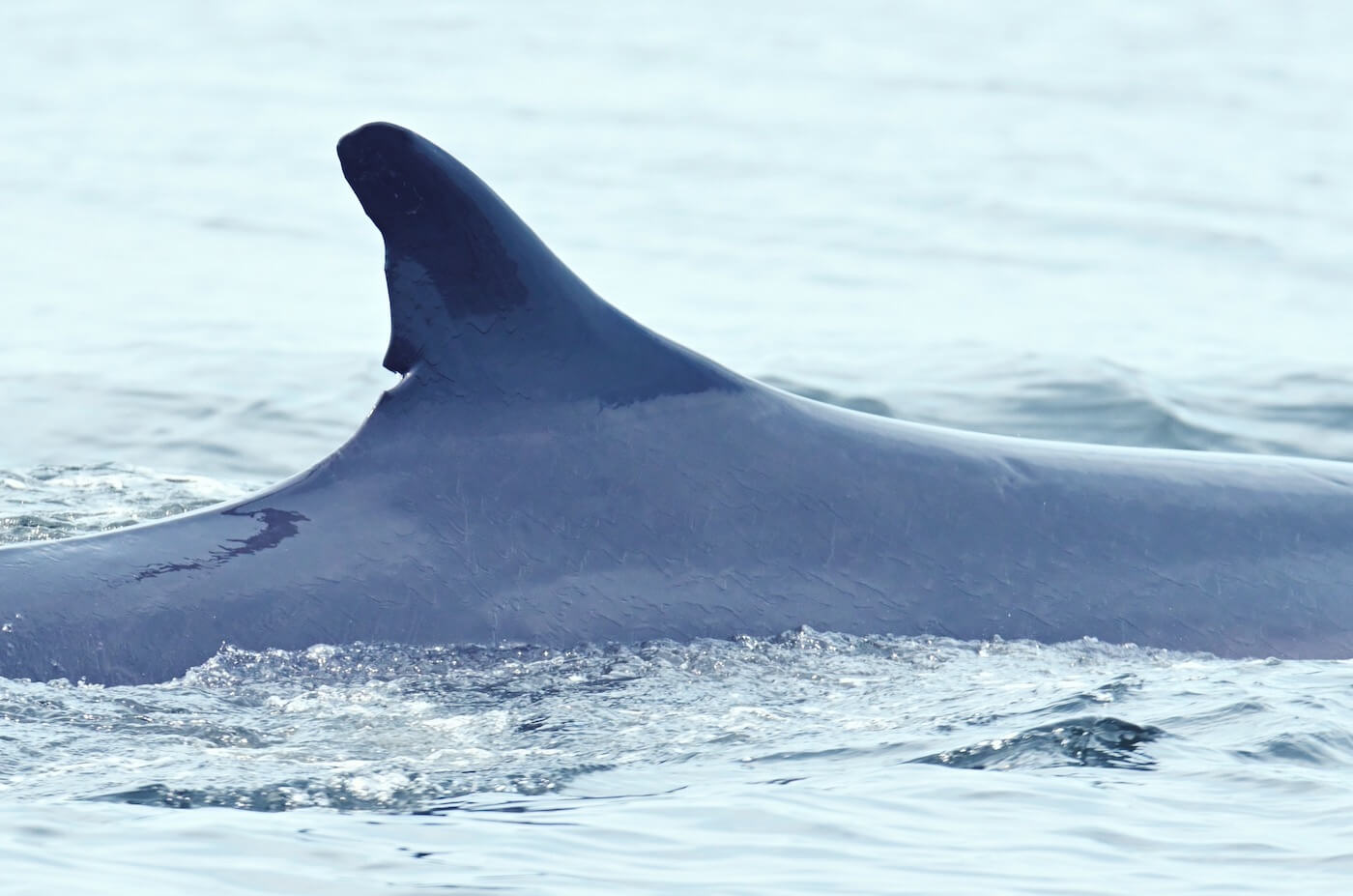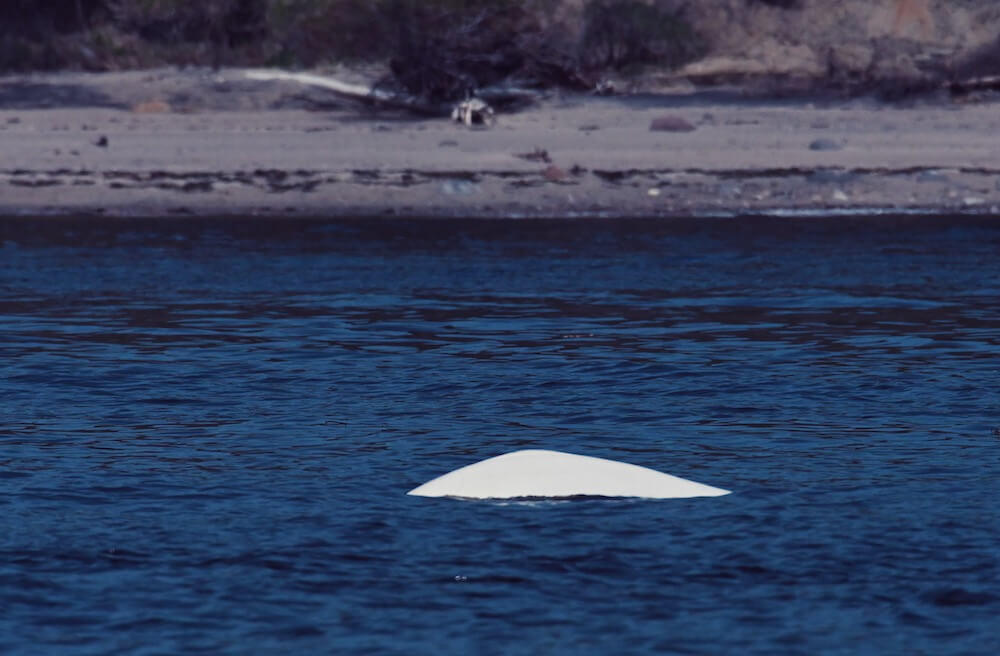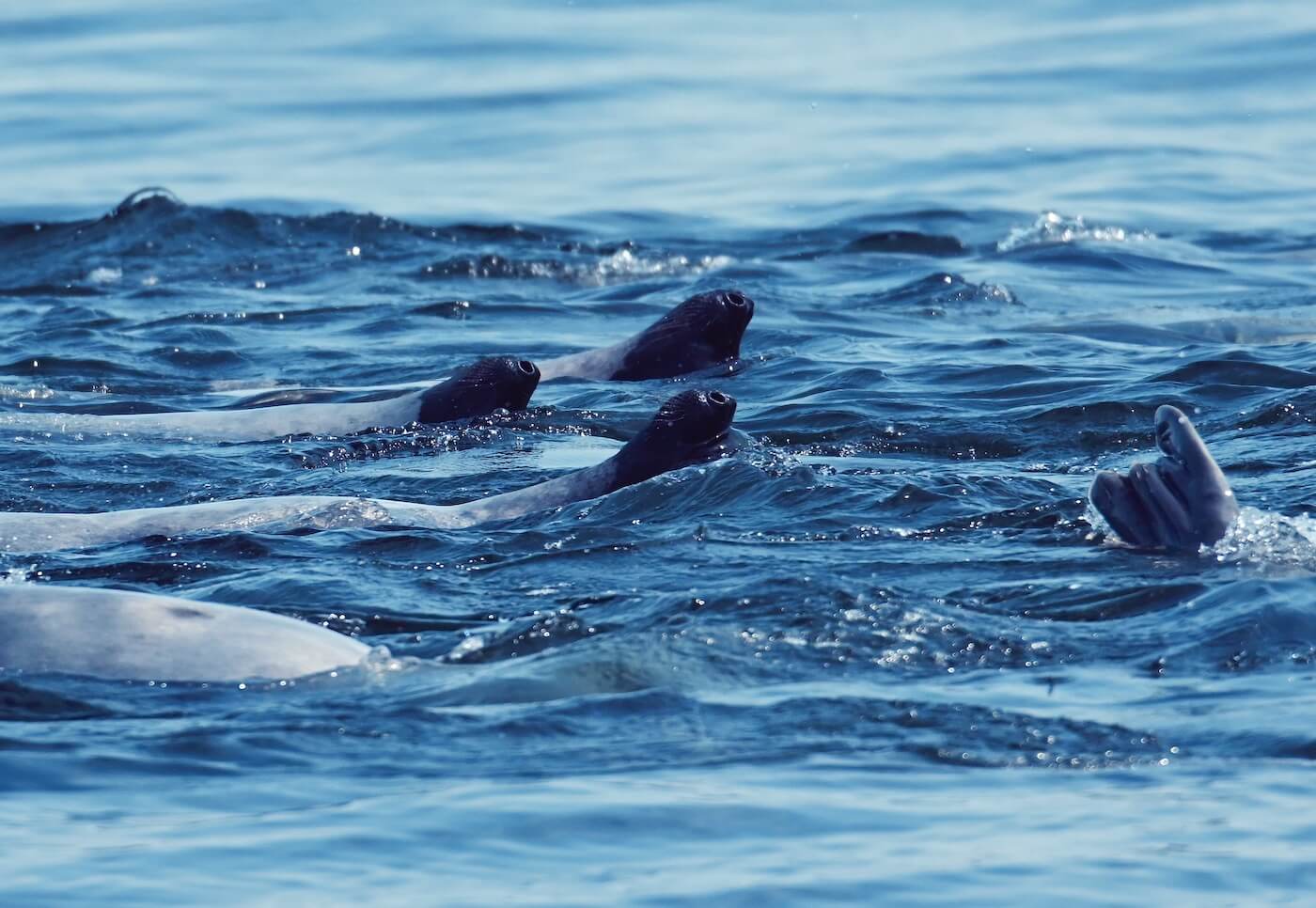Fin whales are stealing the show this week, in large numbers. Individuals have even been identified, and some regulars are back! Beluga whales, minke whales, porpoises and three species of seal also mingle in the estuary.
Identifying fin whales
The presence of five fin whales in the estuary is cause for celebration! It makes for wonderful sightings for the visitors who flock here, and for the coastal dwellers who look out to sea. The powerful breath of these whales, their speed and their immensity are awe-inspiring. Unlike humpbacks, fin whales don’t show their tails when they dive. So scientists have their work cut out to identify them. Instead, by taking photos of the fin whale’s chevron and dorsal fin, research teams will be able to discover which individuals are swimming in the St. Lawrence. In particular, scientists are analyzing coloration patterns and scars. This week, five fin whales were identified. They are Bp919, Bp913, Bp910, Bp917 aka Orion and Bp920.
Orion owes its name to the marks evoking the constellation on its right chevron. Once clearly visible, these markings have faded over time. The tip of its V-shaped dorsal fin is a little damaged. It also has a notch and a small hump. Short white lines and an apostrophe-shaped depression can also be seen near the dorsal fin, on the right-hand side. Bp913 is one of the most loyal animals in the sector. However, it missed its call in 2023. This estuary regular has spent almost every summer in the St. Lawrence since 1997, the year of his first sighting. His stays often last a long time. In 2016, he stayed in the marine park for at least 14 weeks, and in 2018, at least 11 weeks. This could be just the beginning of his stay!
Contrasting white
Belugas in the Saguenay, near Pointe-Noire. On the other side, in Tadoussac, from the Pointe de l’Islet or on the rocks in front of the Centre d’interprétation des mammifères marins, walkers catch sight of small white specks moving through the water. Sometimes disappearing, but never for long. Fingertips point to the water, hoping to see the beluga resurface. And we exclaim with joy when we see them again.
This scene must happen quite often, as belugas are regularly observed in this area. One regular even comments that he has a daily rendezvous with the whales: “This morning, like almost every day this time of year, between 20 and 30 belugas are going up or down the Saguenay River”. Sea canaries are not only found in the fjord. They are also reported off the dunes at Tadoussac and Rivière-du-Loup. A dozen beluga whales swim off Cacouna, while a grey seal swims not far away, but also near Matane and Baie-Comeau.
At the four corners of the St. Lawrence
Minke whales have also been sighted in all four corners of the St. Lawrence estuary, from Tadoussac via Franquelin and Godbout to Ile Rouge. Pinniped sightings included harp seals, grey seals in groups off Ile Verte or alone eating fish, and harbour seals swimming or resting on rocks. On Wednesday morning, four humpback whales were also spotted from the Tadoussac dunes.
In the Franquelin area, the blowing of a humpback whale echoes through the village on a fine spring evening. There may even be two individuals circulating offshore: “On Sunday, I saw a large humpback whale, and on Friday it seemed smaller,” comments a local resident. The smallest cetacean in the St. Lawrence has also been spotted: “Four or five harbour porpoises,” says an enthusiast. I mean, you could almost say it’s porpoising!
Thanks to all our collaborators!
Special thanks go out to all our observers who share their love for marine mammals with us! Your encounters with cetaceans and pinnipeds are always a pleasure to read and discover.
On the water or from shore, it is your eyes that give life to this column.
Patrice Corbeil
Laetitia Desbordes
Diane Ostiguy
Élizabeth Melis
Camille Némond
Renaud Pintiaux
Pascal Pitre
Christine Stadelmann
Andréanne Sylvain
Marielle Vanasse
And all those we left out!
Additionally, we would like to acknowledge the following teams that also share their sightings:
Mingan Island Cetacean Study (MICS)
Marine Mammal Observation Network (ROMM)
Quebec Marine Mammal Emergency Response Network (QMMERN)
Group for Research and Education on Marine Mammals (GREMM)
Would you also like to share your observations?
Have you seen any marine mammals in the St. Lawrence? Whether it’s a spout offshore or just a couple of seals, drop us a line and send your photos to [email protected]!












